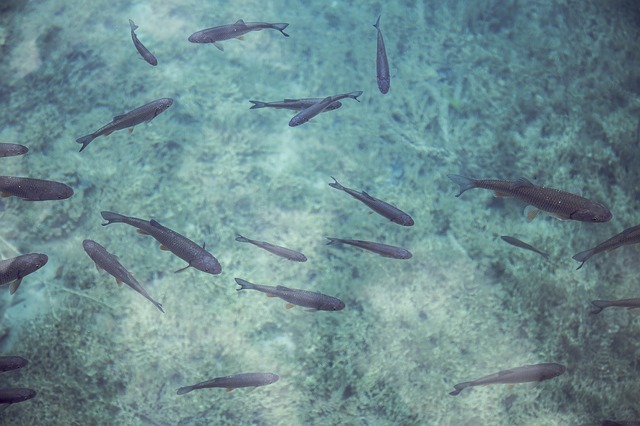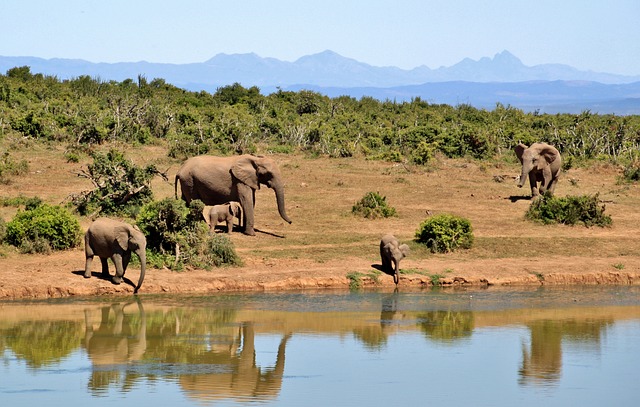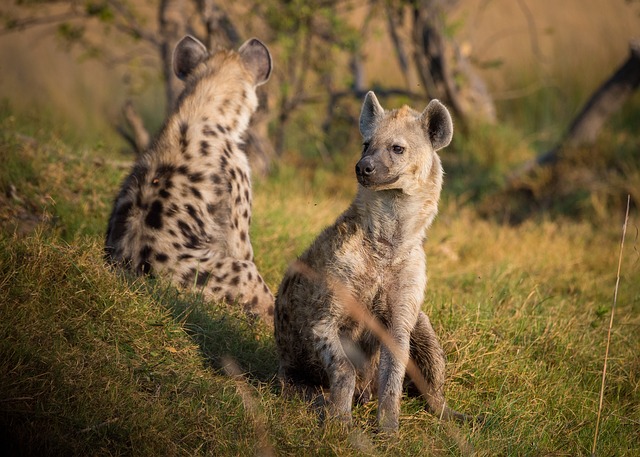- Make a two person chili
- Pay $20 Entry Fee
- Make 4 gallons of chili to win great prizes!
Uncategorized
Hello world!
Welcome to WordPress. This is your first post. Edit or delete it, then start writing!
Short Codes
[rara_drop_cap font_size=”rara-drop-cap2″]L[/rara_drop_cap]orem ipsum dolor sit ccomet, consectetuer adipiscing elit. Aenean commodo ligula eget dolor. Aenean massa. Cum sociis natoque penatibus et magnis dis parturient montes, nascetur ridiculus mus.
[rara_toggle title=”This is an example of Toggle” status=”close”]Donec quam felis, ultricies nec, pellentesque eu, pretium quis, sem. Nulla consequat massa quis enim. Donec pede justo, fringilla vel, aliquet nec, vulputate eget, arcu. In enim justo, rhoncus ut, imperdiet a, venenatis vitae, justo.
Nullam dictum felis eu pede mollis pretium. Integer tincidunt. Cras dapibus. Vivamus elementum semper nisi. Aenean vulputate eleifend tellus. Aenean leo ligula, porttitor eu, consequat vitae, eleifend ac, enim.
Aliquam lorem ante, dapibus in, viverra quis, feugiat a, tellus. Phasellus viverra nulla ut metus varius laoreet. Quisque rutrum. Aenean imperdiet. Etiam ultricies nisi vel augue. Curabitur ullamcorper ultricies nisi. Nam eget dui. Etiam rhoncus.
[/rara_toggle]
[rara_toggle title=”Title for the Second Toggle” status=”close”]Donec quam felis, ultricies nec, pellentesque eu, pretium quis, sem. Nulla consequat massa quis enim. Donec pede justo, fringilla vel, aliquet nec, vulputate eget, arcu. In enim justo, rhoncus ut, imperdiet a, venenatis vitae, justo.[/rara_toggle]
Nullam dictum felis eu pede mollis pretium. Integer tincidunt. Cras dapibus. Vivamus elementum semper nisi. Aenean vulputate eleifend tellus. Aenean leo ligula, porttitor eu, consequat vitae, eleifend ac, enim.
Aliquam lorem ante, dapibus in, viverra quis, feugiat a, tellus. Phasellus viverra nulla ut metus varius laoreet. Quisque rutrum. Aenean imperdiet. Etiam ultricies nisi vel augue. Curabitur ullamcorper ultricies nisi. Nam eget dui. Etiam rhoncus.
Example of Slider by Shortcodes
[rara_slider]
[rara_slide target=”_self”]https://raratheme.com/preview/elegant-pink-pro/wp-content/uploads/2016/03/img1.jpg[/rara_slide]
[rara_slide target=”_self”]https://raratheme.com/preview/elegant-pink-pro/wp-content/uploads/2016/03/img14.jpg[/rara_slide][rara_slide target=”_self”]https://raratheme.com/preview/elegant-pink-pro/wp-content/uploads/2016/03/img14.jpg[/rara_slide]
[/rara_slider]
Maecenas tempus, tellus eget condimentum rhoncus, sem quam semper libero, sit amet adipiscing sem neque sed ipsum. Nam quam nunc, blandit vel, luctus pulvinar, hendrerit id, lorem. Maecenas nec odio et ante tincidunt tempus.
Examples of Listing
[rara_list list_type=”rara-list-style2″]
[rara_li]List Item 1[/rara_li]
[rara_li]List Item 2[/rara_li]
[rara_li]List Item 3[/rara_li]
[rara_li]List Item 4[/rara_li]
[/rara_list]
[rara_list list_type=”rara-list-style1″]
[rara_li]List Item 1[/rara_li]
[rara_li]List Item 2[/rara_li]
[rara_li]List Item 3[/rara_li]
[rara_li]List Item 4[/rara_li]
[/rara_list]
[rara_list list_type=”rara-list-style3″]
[rara_li]List Item 1[/rara_li]
[rara_li]List Item 2[/rara_li]
[rara_li]List Item 3[/rara_li]
[rara_li]List Item 4[/rara_li]
[/rara_list]
[rara_list list_type=”rara-list-style5″]
[rara_li]List Item 1[/rara_li]
[rara_li]List Item 2[/rara_li]
[rara_li]List Item 3[/rara_li]
[rara_li]List Item 4[/rara_li]
[/rara_list]
[rara_list list_type=”rara-list-style6″]
[rara_li]List Item 1[/rara_li]
[rara_li]List Item 2[/rara_li]
[rara_li]List Item 3[/rara_li]
[rara_li]List Item 4[/rara_li]
[/rara_list]
Donec vitae sapien ut libero venenatis faucibus. Nullam quis ante. Etiam sit amet orci eget eros faucibus tincidunt. Duis leo. Sed fringilla mauris sit amet nibh. Donec sodales sagittis magna.
An Example of Tab
[rara_tab_group type=”horizontal”]
[rara_tab title=”Title 1″]
Sed consequat, leo eget bibendum sodales, augue velit cursus nunc, quis gravida magna mi a libero. Fusce vulputate eleifend sapien. Vestibulum purus quam, scelerisque ut, mollis sed, nonummy id, metus. Nullam accumsan lorem in dui.
Cras ultricies mi eu turpis hendrerit fringilla. Vestibulum ante ipsum primis in faucibus orci luctus et ultrices posuere cubilia Curae; In ac dui quis mi consectetuer lacinia. Nam pretium turpis et arcu.
[/rara_tab]
[rara_tab title=”Title 2″]
Sed consequat, leo eget bibendum sodales, augue velit cursus nunc, quis gravida magna mi a libero. Fusce vulputate eleifend sapien. Vestibulum purus quam, scelerisque ut, mollis sed, nonummy id, metus. Nullam accumsan lorem in dui.
Cras ultricies mi eu turpis hendrerit fringilla. Vestibulum ante ipsum primis in faucibus orci luctus et ultrices posuere cubilia Curae; In ac dui quis mi consectetuer lacinia. Nam pretium turpis et arcu.
Cras ultricies mi eu turpis hendrerit fringilla. Vestibulum ante ipsum primis in faucibus orci luctus et ultrices posuere cubilia Curae; In ac dui quis mi consectetuer lacinia. Nam pretium turpis et arcu.
[/rara_tab]
[rara_tab title=”Title 3″]
Sed consequat, leo eget bibendum sodales, augue velit cursus nunc, quis gravida magna mi a libero. Fusce vulputate eleifend sapien. Vestibulum purus quam, scelerisque ut, mollis sed, nonummy id, metus. Nullam accumsan lorem in dui.
Cras ultricies mi eu turpis hendrerit fringilla. Vestibulum ante ipsum primis in faucibus orci luctus et ultrices posuere cubilia Curae; In ac dui quis mi consectetuer lacinia. Nam pretium turpis et arcu.
[/rara_tab]
[/rara_tab_group]
Sed consequat, leo eget bibendum sodales, augue velit cursus nunc, quis gravida magna mi a libero. Fusce vulputate eleifend sapien. Vestibulum purus quam, scelerisque ut, mollis sed, nonummy id, metus. Nullam accumsan lorem in dui.
An example of Accordian
[rara_accordian_wrap]
[rara_accordian title=”This is an example of Accordian”]Aliquam lorem ante, dapibus in, viverra quis, feugiat a, tellus. Phasellus viverra nulla ut metus varius laoreet. Quisque rutrum. Aenean imperdiet. Etiam ultricies nisi vel augue. Curabitur ullamcorper ultricies nisi. Nam eget dui. Etiam rhoncus.
Maecenas tempus, tellus eget condimentum rhoncus, sem quam semper libero, sit amet adipiscing sem neque sed ipsum. Nam quam nunc, blandit vel, luctus pulvinar, hendrerit id, lorem. Maecenas nec odio et ante tincidunt tempus.
Donec vitae sapien ut libero venenatis faucibus. Nullam quis ante. Etiam sit amet orci eget eros faucibus tincidunt. Duis leo. Sed fringilla mauris sit amet nibh. Donec sodales sagittis magna.
[/rara_accordian]
[rara_accordian title=”Title 2″]Aliquam lorem ante, dapibus in, viverra quis, feugiat a, tellus. Phasellus viverra nulla ut metus varius laoreet. Quisque rutrum. Aenean imperdiet. Etiam ultricies nisi vel augue. Curabitur ullamcorper ultricies nisi. Nam eget dui. Etiam rhoncus.[/rara_accordian]
[rara_accordian title=”Title 3″]CAliquam lorem ante, dapibus in, viverra quis, feugiat a, tellus. Phasellus viverra nulla ut metus varius laoreet. Quisque rutrum. Aenean imperdiet. Etiam ultricies nisi vel augue. Curabitur ullamcorper ultricies nisi. Nam eget dui. Etiam rhoncus.[/rara_accordian]
[/rara_accordian_wrap]
Example of Grid Layout
[rara_column_wrap]
[rara_column span=”2″]Etiam imperdiet imperdiet orci. Nunc nec neque. Phasellus leo dolor, tempus non, auctor et, hendrerit quis, nisi. Curabitur ligula sapien, tincidunt non, euismod vitae, posuere imperdiet, leo. Maecenas malesuada. Praesent congue erat at massa. Sed cursus turpis vitae tortor.[/rara_column]
[rara_column span=”2″]Donec posuere vulputate arcu. Phasellus accumsan cursus velit. Vestibulum ante ipsum primis in faucibus orci luctus et ultrices posuere cubilia Curae; Sed aliquam, nisi quis porttitor congue, elit erat euismod orci, ac placerat dolor lectus quis orci. Phasellus consectetuer vestibulum elit.[/rara_column]
[rara_column span=”2″]Aenean tellus metus, bibendum sed, posuere ac, mattis non, nunc. Vestibulum fringilla pede sit amet augue. In turpis. Pellentesque posuere. Praesent turpis. Aenean posuere, tortor sed cursus feugiat, nunc augue blandit nunc, eu sollicitudin urna dolor sagittis lacus.[/rara_column]
[/rara_column_wrap]
Etiam imperdiet imperdiet orci. Nunc nec neque. Phasellus leo dolor, tempus non, auctor et, hendrerit quis, nisi. Curabitur ligula sapien, tincidunt non, euismod vitae, posuere imperdiet, leo. Maecenas malesuada. Praesent congue erat at massa. Sed cursus turpis vitae tortor.
An Example of Call To Action (CTA) Button.
[rara_call_to_action title=”” button_text=”Buy Benevolent Pro Now!” button_url=”https://raratheme.com/wordpress-themes/benevolent-pro” target=”_blank” button_align=”center”][/rara_call_to_action]
Pellentesque auctor neque nec urna. Proin sapien ipsum, porta a, auctor quis, euismod ut, mi. Aenean viverra rhoncus pede. Pellentesque habitant morbi tristique senectus et netus et malesuada fames ac turpis egestas.
Global Warming
Global warming and climate change are terms for the observed century-scale rise in the average temperature of the Earth’s climate system and its related effects. Multiple lines of scientific evidence show that the climate system is warming. Although the increase of near-surface atmospheric temperature is the measure of global warming often reported in the popular press, most of the additional energy stored in the climate system since 1970 has gone into the oceans. The rest has melted ice and warmed the continents and atmosphere. Many of the observed changes since the 1950s are unprecedented over tens to thousands of years.
Scientific understanding of global warming is increasing. The Intergovernmental Panel on Climate Change (IPCC) reported in 2014 that scientists were more than 95% certain that global warming is mostly being caused by human (anthropogenic) activities, mainly increasing concentrations of greenhouse gases such as carbon dioxide (CO2). Human-made carbon dioxide continues to increase above levels not seen in hundreds of thousands of years. Currently, about half of the carbon dioxide released from the burning of fossil fuels remains in the atmosphere. The rest is absorbed by vegetation and the oceans. Climate model projections summarized in the report indicated that during the 21st century the global surface temperature is likely to rise a further 0.3 to 1.7 °C (0.5 to 3.1 °F) for their lowest emissions scenario and 2.6 to 4.8 °C (4.7 to 8.6 °F) for the highest emissions scenario. These findings have been recognized by the national science academies of the major industrialized nations and are not disputed by any scientific body of national or international standing.
Observed temperature changes
The global average (land and ocean) surface temperature shows a warming of 0.85 [0.65 to 1.06] °C in the period 1880 to 2012, based on multiple independently produced datasets. Earth’s average surface temperature rose by 0.74±0.18 °C over the period 1906–2005. The rate of warming almost doubled for the last half of that period (0.13±0.03 °C per decade, versus 0.07±0.02 °C per decade).
The average temperature of the lower troposphere has increased between 0.13 and 0.22 °C (0.23 and 0.40 °F) per decade since 1979, according to satellite temperature measurements. Climate proxies show the temperature to have been relatively stable over the one or two thousand years before 1850, with regionally varying fluctuations such as the Medieval Warm Period and the Little Ice Age.
Warmest years
15 of the top 16 warmest years have occurred since 2000. While record-breaking years can attract considerable public interest, individual years are less significant than the overall trend. So some climatologists have criticized the attention that the popular press gives to “warmest year” statistics; for example, Gavin Schmidt stated “the long-term trends or the expected sequence of records are far more important than whether any single year is a record or not.”
2015 was not only the warmest year on record, it broke the record by the largest margin by which the record has been broken. 2015 was the 39th consecutive year with above-average temperatures. Ocean oscillations like El Niño Southern Oscillation (ENSO) can affect global average temperatures, for example, 1998 temperatures were significantly enhanced by strong El Niño conditions. 1998 remained the warmest year until 2005 and 2010 and the temperature of both of these years was enhanced by El Niño periods. The large margin by which 2015 is the warmest year is also attributed to another strong El Niño.
Climate Change
Climate change is a change in the statistical distribution of weather patterns when that change lasts for an extended period of time (i.e., decades to millions of years). Climate change may refer to a change in average weather conditions, or in the time variation of weather around longer-term average conditions (i.e., more or fewer extreme weather events). Climate change is caused by factors such as biotic processes, variations in solar radiation received by Earth, plate tectonics, and volcanic eruptions. Certain human activities have also been identified as significant causes of recent climate change, often referred to as global warming.
Scientists actively work to understand past and future climate by using observations and theoretical models. A climate record—extending deep into the Earth’s past—has been assembled, and continues to be built up, based on geological evidence from borehole temperature profiles, cores removed from deep accumulations of ice, floral and faunal records, glacial and periglacial processes, stable-isotope and other analyses of sediment layers, and records of past sea levels. More recent data are provided by the instrumental record. General circulation models, based on the physical sciences, are often used in theoretical approaches to match past climate data, make future projections, and link causes and effects in climate change.
Causes
On the broadest scale, the rate at which energy is received from the Sun and the rate at which it is lost to space determine the equilibrium temperature and climate of Earth. This energy is distributed around the globe by winds, ocean currents, and other mechanisms to affect the climates of different regions.
Factors that can shape climate are called climate forcings or “forcing mechanisms”. These include processes such as variations in solar radiation, variations in the Earth’s orbit, variations in the albedo or reflectivity of the continents and oceans, mountain-building and continental drift and changes in greenhouse gas concentrations. There are a variety of climate change feedbacks that can either amplify or diminish the initial forcing. Some parts of the climate system, such as the oceans and ice caps, respond more slowly in reaction to climate forcings, while others respond more quickly. There are also key threshold factors which when exceeded can produce rapid change.
Arctic sea ice loss
The decline in Arctic sea ice, both in extent and thickness, over the last several decades is further evidence for rapid climate change. Sea ice is frozen seawater that floats on the ocean surface. It covers millions of square miles in the polar regions, varying with the seasons. In the Arctic, some sea ice remains year after year, whereas almost all Southern Ocean or Antarctic sea ice melts away and reforms annually. Satellite observations show that Arctic sea ice is now declining at a rate of 13.3 percent per decade, relative to the 1981 to 2010 average.
Greenhouse Effect
The greenhouse effect is the process by which radiation from a planet’s atmosphere warms the planet’s surface to a temperature above what it would be without its atmosphere.
If a planet’s atmosphere contains radiatively active gases (i.e., greenhouse gases) the atmosphere will radiate energy in all directions. Part of this radiation is directed towards the surface, warming it. The downward component of this radiation – that is, the strength of the greenhouse effect – will depend on the atmosphere’s temperature and on the amount of greenhouse gases that the atmosphere contains.
On Earth, the atmosphere is warmed by absorption of infrared thermal radiation from the underlying surface, absorption of shorter wavelength radiant energy from the sun, and convective heat fluxes from the surface. Greenhouse gases in the atmosphere radiate energy, some of which is directed to the surface and lower atmosphere. The mechanism that produces this difference between the actual surface temperature and the effective temperature is due to the atmosphere and is known as the greenhouse effect.
Earth’s natural greenhouse effect is critical to supporting life. Human activities, primarily the burning of fossil fuels and clearing of forests, have intensified the natural greenhouse effect, causing global warming.
History
The existence of the greenhouse effect was argued for by Joseph Fourier in 1824. The argument and the evidence was further strengthened by Claude Pouillet in 1827 and 1838, and reasoned from experimental observations by John Tyndall in 1859. The effect was more fully quantified by Svante Arrhenius in 1896. However, the term “greenhouse” was not used to refer to this effect by any of these scientists; the term was first used in this way by Nils Gustaf Ekholm in 1901.
In 1917 Alexander Graham Bell wrote “[The unchecked burning of fossil fuels] would have a sort of greenhouse effect”, and “The net result is the greenhouse becomes a sort of hot-house.” Bell went on to also advocate the use of alternate energy sources, such as solar energy.
Mechanism
Earth receives energy from the Sun in the form of ultraviolet, visible, and near-infrared radiation. Of the total amount of solar energy available at the top of the atmosphere, about 26% is reflected to space by the atmosphere and clouds and 19% is absorbed by the atmosphere and clouds. Most of the remaining energy is absorbed at the surface of Earth. Because the Earth’s surface is colder than the photosphere of the Sun, it radiates at wavelengths that are much longer than the wavelengths that were absorbed. Most of this thermal radiation is absorbed by the atmosphere, thereby warming it. In addition to the absorption of solar and thermal radiation, the atmosphere further gains heat by sensible and latent heat fluxes from the surface. The atmosphere radiates energy both upwards and downwards; the part radiated downwards is absorbed by the surface of Earth. This leads to a higher equilibrium temperature than if the atmosphere were absent.
Zebras in Tanzania
Zebras are several species of African equids united by their distinctive black and white striped coats. Their stripes come in different patterns, unique to each individual. They are generally social animals that live in small harems to large herds. Unlike their closest relatives the horses and donkeys, zebras have never been truly domesticated.
There are three species of zebras: the plains zebra, the Grévy’s zebra and the mountain zebra. The plains zebra and the mountain zebra belong to the subgenus Hippotigris, but Grévy’s zebra is the sole species of subgenus Dolichohippus. The latter resembles an ass, to which it is closely related, while the former two are more horse-like. All three belong to the genus Equus, along with other living equids.
The unique stripes of zebras make them one of the animals most familiar to people. They occur in a variety of habitats, such as grasslands, savannas, woodlands, thorny scrublands, mountains, and coastal hills. However, various anthropogenic factors have had a severe impact on zebra populations, in particular hunting for skins and habitat destruction.
Everytime I look at a zebra, I can’t figure out whether it’s black with white stripes or white with black stripes, and that frustrates me.
 Grévy’s zebra and the mountain zebra are endangered. While plains zebras are much more plentiful, one subspecies, the quagga, became extinct in the late 19th century – though there is currently a plan, called the Quagga Project, that aims to breed zebras that are phenotypically similar to the quagga in a process called breeding back.
Grévy’s zebra and the mountain zebra are endangered. While plains zebras are much more plentiful, one subspecies, the quagga, became extinct in the late 19th century – though there is currently a plan, called the Quagga Project, that aims to breed zebras that are phenotypically similar to the quagga in a process called breeding back.
The name “zebra” in English dates back to c. 1600, from Italian zebra, perhaps from Portuguese, which in turn is said to be Congolese. The Encarta Dictionary says its ultimate origin is uncertain, but perhaps it may come from Latin equiferus meaning “wild horse”; from equus and ferus .
The word was traditionally pronounced with a long initial vowel, but over the course of the 20th century, the pronunciation with the short initial vowel became the usual one in the UK and Commonwealth. The pronunciation with a long initial vowel remains standard in the United States.
The plains zebra (Equus quagga, formerly Equus burchelli) is the most common, and has or had about six subspecies distributed across much of southern and eastern Africa. It, or particular subspecies of it, have also been known as the common zebra, the dauw, Burchell’s zebra, Chapman’s zebra, Wahlberg’s zebra, Selous’ zebra, Grant’s zebra, Boehm’s zebra and the quagga.
Peaceful Lifestyle of a Monk
A monk is a person who practices religious asceticism, living either alone or with any number of other monks. A monk may be a person who decided to dedicate his life to serving all other living beings, or to be an ascetic who voluntarily chooses to leave mainstream society and live his life in prayer and contemplation. The concept is ancient and can be seen in many religions and in philosophy.
In the Greek language the term can apply to women, but in modern English it is mainly in use for men. The word nun is typically used for female monastics.
Although the term monachos is of Christian origin, in the English language “monk” tends to be used loosely also for both male and female ascetics from other religious or philosophical backgrounds. However, being generic, it is not interchangeable with terms that denote particular kinds of monk, such as cenobite, hermit, anchorite, hesychast, or solitary.
If you had a female friend who is a monk, what gift would you give in her birthday? She may not take a gift but still it is a nice option to explore. Would it be a high-quality and best hiking boots for women or a nice sleeping bag?
In Eastern Orthodoxy, Oriental Orthodoxy, and Eastern Catholicism, monasticism holds a very special and important place:
“If in our daily life we can smile, if we can be peaceful and happy, not only we, but everyone will profit from it. This is the most basic kind of peace work.”
― Thich Nhat Hanh, Being Peace
 “Angels are a light for monks, monks are a light for laymen”. The Orthodox Church measures its health by the quality of its monks and nuns. Orthodox monastics separate themselves from the world in order to pray unceasingly for the world. They do not, in general, have as their primary purpose the running of social services, as is common in Western Christianity,[citation needed] but instead are concerned with attaining theosis, or union with God.
“Angels are a light for monks, monks are a light for laymen”. The Orthodox Church measures its health by the quality of its monks and nuns. Orthodox monastics separate themselves from the world in order to pray unceasingly for the world. They do not, in general, have as their primary purpose the running of social services, as is common in Western Christianity,[citation needed] but instead are concerned with attaining theosis, or union with God.
However, care for the poor and needy has always been an obligation of monasticism, so Orthodox monasteries are not normally “cloistered” like some contemplative Western houses are, though the level of contact will vary from community to community. Orthodox hermits, on the other hand, have little or no contact with the outside world.
Orthodox monasticism does not have religious orders as are found in the West, nor do they have Rules in the same sense as the Rule of St. Benedict. Rather, Eastern monastics study and draw inspiration from the writings of the Desert Fathers as well as other Church Fathers; probably the most influential of which are the Greater Asketikon and Lesser Asketikon of St. Basil the Great and the Philokalia, which was compiled by St. Nikodemos of the Holy Mountain and St. Makarios of Corinth. Hesychasm is of primary importance in the ascetical theology of the Orthodox Church.
Life Under Water
Three quarters of the planet Earth is covered by water. A majority of the planet’s solid surface is abyssal plain, at depths between 4,000 and 5,500 metres (13,100 and 18,000 ft) below the surface of the oceans. The solid surface location on the planet closest to the centre of the orb is the Challenger Deep, located in the Mariana Trench at a depth of 10,924 metres (35,840 ft).
Although a number of human activities are conducted underwater—such as research, scuba diving for work or recreation, or even underwater warfare with submarines, this very extensive environment on planet Earth is hostile to humans in many ways and therefore little explored. But it can be explored by sonar, or more directly via manned or autonomous submersibles. The ocean floors have been surveyed via sonar to at least a coarse resolution; particularly-strategic areas have been mapped in detail, in the name of detecting enemy submarines, or aiding friendly ones, though the resulting maps may still be classified.
An immediate obstacle to human activity under water is the fact that human lungs cannot naturally function in this environment. Unlike the gills of fish, human lungs are adapted to the exchange of gases at atmospheric pressure, not liquids. Aside from simply having insufficient musculature to rapidly move water in and out of the lungs, a more significant problem for all air-breathing animals, such as mammals and birds, is that water contains so little dissolved oxygen compared with atmospheric air.
Nothing is softer or more flexible than water, yet nothing can resist it.
Lao Tzu
The density of water also causes problems that increase dramatically with depth. The atmospheric pressure at the surface is 14.7 pounds per square inch or around 100 kPa. A comparable water pressure occurs at a depth of only 10 m (33 ft) (9.8 m (32 ft) for sea water). Thus, at about 10 m below the surface, the water exerts twice the pressure (2 atmospheres or 200 kPa) on the body as air at surface level.
 For solid objects like human bones and muscles, this added pressure is not much of a problem; but it is a problem for any air-filled spaces like the mouth, ears, paranasal sinuses and lungs. This is because the air in those spaces reduces in volume when under pressure and so does not provide those spaces with support from the higher outside pressure. Even at a depth of 8 ft underwater, an inability to equalize air pressure in the middle ear with outside water pressure can cause pain, and the tympanic membrane can rupture at depths under 10 ft (3 m).
For solid objects like human bones and muscles, this added pressure is not much of a problem; but it is a problem for any air-filled spaces like the mouth, ears, paranasal sinuses and lungs. This is because the air in those spaces reduces in volume when under pressure and so does not provide those spaces with support from the higher outside pressure. Even at a depth of 8 ft underwater, an inability to equalize air pressure in the middle ear with outside water pressure can cause pain, and the tympanic membrane can rupture at depths under 10 ft (3 m).
The danger of pressure damage is greatest in shallow water because the rate of pressure change is greatest at the surface of the water. For example, the pressure increase between the surface and 10 m is 100% (100 kPa to 200 kPa), but the pressure increase from 30 m
With increasing depth underwater, sunlight is absorbed, and the amount of visible light diminishes.
Because absorption is greater for long wavelengths (red end of the visible spectrum) than for short wavelengths (blue end of the visible spectrum), the colour spectrum is rapidly altered with increasing depth. White objects at the surface appear bluish underwater, and red objects appear dark, even black. Although light penetration will be less if water is turbid, in the very clear water of the open ocean less than 25% of the surface light reaches a depth of 10 m. At 100 m (330 ft) the light present from the sun is normally about 0.5% of that at the surface.
The euphotic depth is the depth at which light intensity falls to 1% of the value at the surface. This depth is dependent upon water clarity, being only a few metres underwater in a turbid estuary, but may reach up to 200 metres in the open ocean. At the euphotic depth, plants have no net energy gain from photosynthesis and thus cannot grow.
Preserving Wildlifes
Wildlife traditionally refers to undomesticated animal species, but has come to include all plants, fungi, and other organisms that grow or live wild in an area without being introduced by humans.
Wildlife can be found in all ecosystems. Deserts, forests, rain forests, plains, grasslands, and other areas including the most developed urban sites, all have distinct forms of wildlife. While the term in popular culture usually refers to animals that are untouched by human factors, most scientists agree that much wildlife is affected by human activities.
Humans have historically tended to separate civilization from wildlife in a number of ways including the legal, social, and moral sense. Some animals, however, have adapted to suburban environments. This includes such animals as domesticated cats, dogs, mice, and gerbils.Some religions have often declared certain animals to be sacred, and in modern times concern for the natural environment has provoked activists to protest the exploitation of wildlife for human benefit or entertainment.
The global wildlife population has decreased by 52 percent between 1970 and 2014, according to a report by the World Wildlife Fund.
Some people hikes several days to reach to various regions to preserve wild animals using their best hiking boots for women and men.
Anthropologists believe that the Stone Age people and hunter-gatherers relied on wildlife, both plants and animals, for their food. In fact, some species may have been hunted to extinction by early human hunters. Today, hunting, fishing, and gathering wildlife is still a significant food source in some parts of the world.
Habitat for wildlife is continually shrinking – I can at least provide a way station.
Peter Coyote
In other areas, hunting and non-commercial fishing are mainly seen as a sport or recreation, with the edible meat as mostly a side benefit of it. Meat sourced from wildlife that is not traditionally regarded as game is known as bush meat. The increasing demand for wildlife as a source of traditional food in East Asia is decimating populations of sharks, primates, pangolins and other animals, which they believe have aphrodisiac properties.
In November 2008, almost 900 plucked and “oven-ready” owls and other protected wildlife species were confiscated by the Department of Wildlife and National Parks in Malaysia, according to TRAFFIC. The animals were believed to be bound for China, to be sold in wild meat restaurants. Most are listed in CITES (the Convention on International Trade in Endangered Species of Wild Fauna and Flora) which prohibits or restricts such trade.
Exploitation of wild populations has been a characteristic of modern man since our exodus from Africa 130,000 – 70,000 years ago. The rate of extinctions of entire species of plants and animals across the planet has been so high in the last few hundred years it is widely believed that we are in the sixth great extinction event on this planet; the Holocene Mass Extinction.
Destruction of wildlife does not always lead to an extinction of the species in question, however, the dramatic loss of entire species across Earth dominates any review of wildlife destruction as extinction is the level of damage to a wild population from which there is no return.

















